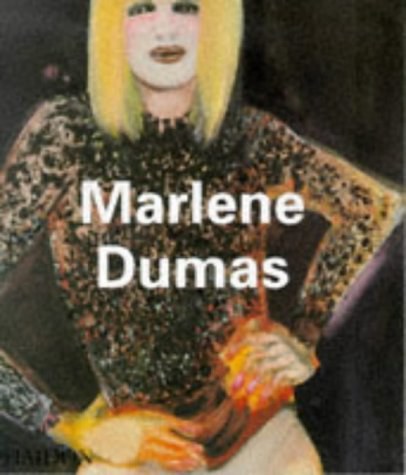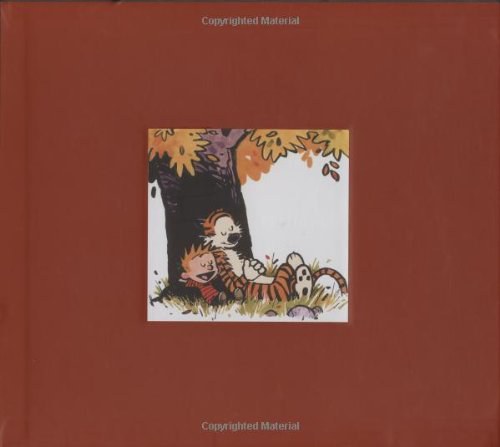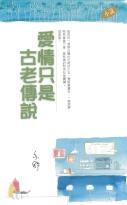
Generation Kill
书刊介绍
Generation Kill 内容简介
Within hours of 9/11, America's war on terrorism fell to those like the 23 Marines of the First Recon Battalion, the first generation dispatched into open-ended combat since Vietnam. They were a new breed of American warrior unrecognizable to their forebears-soldiers raised on hip hop, Internet porn, Marilyn Manson, video games and The Real World, a band of born-again Christians, dopers, Buddhists, and New Agers who gleaned their precepts from kung fu movies and Oprah Winfrey. Cocky, brave, headstrong, wary, and mostly unprepared for the physical, emotional, and moral horrors ahead, the "First Suicide Battalion" would spearhead the blitzkrieg on Iraq, and fight against the hardest resistance Saddam had to offer.
Generation Kill is the funny, frightening, and profane firsthand account of these remarkable men, of the personal toll of victory, and of the randomness, brutality, and camaraderie of a new American war.
Generation Kill 相关资料
From Publishers Weekly
Wright rode into Iraq on March 20, 2003, with a platoon of First Reconnaissance Battalion Marines—the Marine Corps' special operations unit whose motto is "Swift, Silent, Deadly." These highly trained and highly motivated First Recon Marines were the leading unit of the American-led invasion force. Wright wrote about that experience in a three-part series in Rolling Stone that was hailed for its evocative, accurate war reporting. This book, a greatly expanded version of that series, matches its accomplishment. Wright is a perceptive reporter and a facile writer. His account is a personality-driven, readable and insightful look at the Iraq War's first month from the Marine grunt's point of view. It jibes with other firsthand reports of the first phase of the Iraqi invasion (including David Zucchino's Thunder Run), showing the unsettling combination of feeble and vicious resistance put up by the Iraqi army, the Fedayeen militiamen and their Syrian allies against American forces bulldozing through towns and cities and into Baghdad. Wright paints compelling portraits of a handful of Marines, most of whom are young, street-smart and dedicated to the business of killing the enemy. As he shows them, the Marines' main problem was trying to sort out civilians from enemy fighters. Wright does not shy away from detailing what happened when the fog of war resulted in the deaths and maimings of innocent Iraqi men, women and children. Nor does he hesitate to describe intimately the few instances in which Marines were killed and wounded. Fortunately, Wright is not exposing the strengths and weaknesses of a new generation of American fighting men, as the misleadingly hyped-up title and subtitle indicate. Instead, he presents a vivid, well-drawn picture of those fighters in action on the front lines in the blitzkrieg-like opening round of the Iraq War.
Copyright © Reed Business Information, a division of Reed Elsevier Inc. All rights reserved. --This text refers to an out of print or unavailable edition of this title.
From The Washington Post's Book World/washingtonpost.com
Straight from the depths of embeddedness comes Generation Kill: Devil Dogs, Iceman, Captain America and the New Face of American War (Putnam, $24.95), Evan Wright's group portrait of a Marine Corps platoon that fought in Iraq last year. In Wright's view, this sample of the front line of the American military "would be virtually unrecognizable to their forebears in 'The Greatest Generation.' . . . These young men represent what is more or less America's first generation of disposable children. More than half of the guys in the platoon come from broken homes and were raised by absentee, single, working parents. Many are on more intimate terms with video games, reality TV shows and Internet porn than they are with their own parents. Before the 'War on Terrorism' began, not a whole lot was expected of this generation other than the hope that those in it would squeak through high school without pulling too many more mass shootings in the manner of Columbine." Near the end of Wright's stay, one member of the platoon concluded, "War doesn't change anything. . . . This place was [expletive] before we came, and it's [expletive] now. I personally don't believe we 'liberated' the Iraqis. Time will tell." And yet this same naysayer, Wright reports, has since signed up for another mission.
Soldiers of Misfortune
Copyright 2004, The Washington Post Co. All Rights Reserved. --This text refers to an out of print or unavailable edition of this title.
Generation Kill 作者简介
Evan Wright is a reporter for Rolling Stone.
相关推荐
-

孟实文钞
孟实文钞 本书特色 《人文读与收藏·良友文学丛书:孟实文钞》是朱光潜先生早年时期所写关于文学研究的论文,“代表十年来(指20世纪二三十年代)作者对于文艺兴趣的倾...
-

小说旁证
小说旁证 内容简介 《小说旁证》是能俗小说研究一代宗师孙楷第先生的遗作,七卷,主体系从四部古籍中辑出的关旧话本、三言、二拍及《西湖二集》、《石点头》等通俗小说本...
-

李大钊《李大钊选集》
李大钊(1889~1927),字守常。河北乐亭县人。中国最早的马克思主义者,中国共产党主要创始人之一。生于1889年10月29日。1907年
-

中国古代文学作品选(第二卷·魏晋南北朝隋隋唐五代卷)
中国古代文学作品选(第二卷·魏晋南北朝隋隋唐五代卷) 内容简介 《中国古代文学作品选(第2卷·魏晋南北朝隋)》是教育部“九五”规划教材,同时转入教育部“面向21...
-

礼乐中国
《礼乐中国》内容简介:本书是一部兼具学术性与普及性的中华礼乐传统文化通俗读物。全书由《儒家礼乐文化与中华文明之道》《礼乐皆
-

钱理群读周作人
钱理群读周作人 本书特色 周作人是谁?今天的年轻人对这个问题的回答是简单而明确的:他是一个作家,*后成了汉奸,堕落了。但对于二、三、四十年代的年轻人,回答就不会...
-

文学台湾:台湾知识者的文学叙事与理论想象
文学台湾:台湾知识者的文学叙事与理论想象 内容简介 采取个案研究方式,梳理和探讨了台湾文学史上的一系列重要问题:从文学母题的角度研究两岸知识者的精神联系;由日据...
-

环境伦理-全球话语中国视野
环境伦理-全球话语中国视野 节选 20世纪后半叶以来,一个幽灵在地球上四处漫游。这个幽灵就是生态危机。 20世纪后期,特别是90年代以来,人类在全...
-

妙说红楼
妙说红楼 本书特色 高昌著的《妙说红楼》以《红楼梦》中诸多人物为线索,结合自己的阅读经验及体会,参考诸多“红楼”版本形成*终书稿。文章虽不及“红学”专家们所著书...
-

一千零一夜
一千零一夜 内容简介 世界经典*新图文双色版。《一千零一夜》又名《天方夜谭》是一部流传甚广的阿拉伯民间故事。其故事形式多样,有动作的故事、神魔故事、爱情故事、惊...
-

现代卷-中国现代文学总书目.翻译文学卷-中国文学史资料全编-56
现代卷-中国现代文学总书目.翻译文学卷-中国文学史资料全编-56 本书特色 《中国文学史资料全编(现代卷):中国现代文学总书目·翻译文学卷》是国内规模*大、资料...
-

告别虚伪的形式
告别虚伪的形式 本书特色 "e批评丛书”是一套关于几十年代的中国文学评论。由十位大多出生于二十世纪六七十年代的批评家所著,他们在九十年代取得了丰硕的批评业绩,他...
-

崇文集二编(中央文史研究馆馆员文选)
崇文集二编(中央文史研究馆馆员文选) 内容简介 本书所选以文史论著的文章为主,兼收其他文献著述及录文史专著的重要章节或序跋。所选作品,按作者生年为序。所选著作。...
-

十四朝文学要略
十四朝文学要略 本书特色 刘永济编著的《十四朝文学要略(精)》主要略論先秦至隋朝各個階段文學特點,風格以及文學流變沿革等。文中遇有疑難或需要解釋之處,皆以小字詳...
-

古典文学研究丛书-红楼梦:历史与美学的启思
古典文学研究丛书-红楼梦:历史与美学的启思 内容简介 本书作者对《红楼梦》的文本解读作了深入而详细的研究,早在上世纪80年代初就曾提出和论述了“时代镜子”说、“...
-

元董养性《选注杜诗》
元董养性《选注杜诗》 本书特色 中篇小说集。收录作者六篇中篇小说:《鬼子进村》《葬礼》《朋友之妻》《现场》《寻物启事》《国道》。李洱小说中的叙述者不仅仅在叙述别...
-

《文史知识》2016年合订本
《文史知识》2016年合订本 内容简介 《文史知识(2016年合订本共2册)(精)》以普及中国古代文史知识、弘扬中华传统文化为宗旨,荟萃全国品质文史专家,坚持“...
-

苏童《另一种妇女生活》
本书主要内容包括刺青时代、罂粟之家、一个朋友在路上、灰呢绒鸭舌帽、西窗、一个礼拜天的早晨、被玷污的草、稻草人、狂奔、我的
-

毛泽东教我们学交住
毛泽东教我们学交住 内容简介 毛泽东的人际交往世界,可谓内容广泛,丰富多彩。从与亲属的交往到与同学朋友的交往,从与战友的交往到与下级的交往,从与政治对手的交往到...
-

万圣节公主-魔法小花仙-1
万圣节公主-魔法小花仙-1 本书特色 《魔法小花仙(1万圣节公主)》由晴天所著,想不到一面梳妆镜能带着两个小女生穿越到莉碧娜夫人故事里的拉贝尔大陆。传说...





